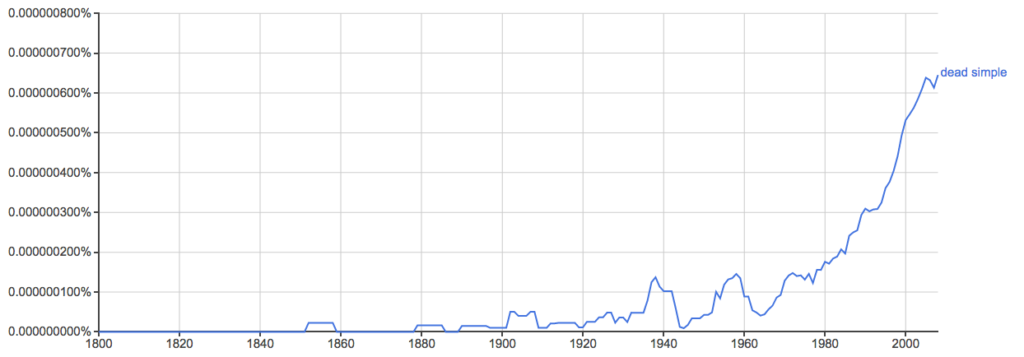Why does anyone think using the phrase “dead simple” is remotely acceptable?
Example:
DishwasherNow is the dead simple way to have a brand new dishwasher delivered to your door from iPhone.
Is “dead” an adjective for “simple”, which has morphed into a noun but has also ceased functioning in this world?
Or is this statement implying that the service is so easy to use that the walking dead can even order their dishwasher from the iPhone they are carrying in their lifeless hands?
Why can’t we just use “easy” or “simple”?
DishwasherNow is the easy way to have a brand new dishwasher delivered to your door.
See how much better that reads? You don’t have to be a rockstar engineer or ninja growth hacker to understand what this phrase means.
EDIT: I’m on the losing end of this battle (from Google Books Ngram Viewer):

